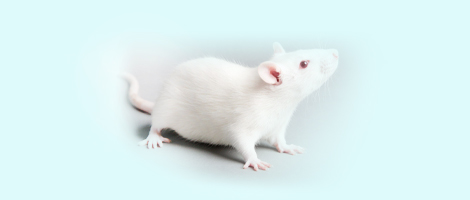| 1 |
中华人民共和国国家质量监督检验检疫总局, 中国国家标准化管理委员会. 实验动物环境及设施: [S]. 北京:中国标准出版社, 2010.
|
|
General Administration of Quality Supervision, Inspection and Quarantine of the People's Republic of China, Standardization Administration of the People's Republic of China. Environment and Facilities for Laboratory Animals: [S]. Beijing: China Standards Press, 2010.
|
| 2 |
刘莲莲, 张成梅, 张海艇, 等. 高校动物房屏障系统高效管理初探[J]. 医学动物防制, 2020, 36(7):661-667. DOI: 10. 7629 /yxdwfz202007015
|
|
LIU L L, ZHANG C M, ZHANG H T, et al. Preliminary Exploration on the efficient management of barrier systems in university animal houses [J]. Journal of Medical Pest Control, 2020, 36(7):661-667. DOI:10.7629 /yxdwfz202007015 .
|
| 3 |
刘琪帅, 李朝, 任晓霞. "双一流"高校建设背景下新型实验动物中心的建设与管理[J]. 实验技术与管理, 2022, 39(9):265-268. DOI: 10.16791/j.cnki.sjg.2022.09.045 .
|
|
LIU Q S, LI C, REN X X.Construction and management of a new-type laboratory animal center under the background of "Double First-Class" university construction [J]. Experimental Technology and Management, 2022, 39(9): 265-268. DOI: 10.16791/j.cnki.sjg.2022.09.045 .
|
| 4 |
陈晓娟. 高校实验动物管理流程信息化探索:以浙江大学为例[J]. 实验动物与比较医学, 2021, 41:554-558. DOI:10.12300/j.issn.1674-5817.2021.045 .
|
|
CHEN X J.Exploration on the Informatization of Laboratory Animal Management Processes in Universities: Taking Zhejiang University as an Example [J]. Laboratory Animals and Comparative Medicine, 2021, 41: 554-558. DOI: 10.12300/j.issn.1674-5817.2021.045 .
|
| 5 |
中华人民共和国国家质量监督检验检疫总局, 中国国家标准化管理委员会. .实验动物福利伦理审查指南 [S]. 北京:中国标准出版社, 2018.
|
|
General Administration of Quality Supervision, Inspection and Quarantine of the People's Republic of China, Standardization Administration of the People's Republic of China. . Guidelines for the Ethical Review of Laboratory Animal Welfare [S]. Beijing: China Standards Press, 2018.
|
| 6 |
陆伟,刘家伟,马永强,等.ChatGPT为代表的大模型对信息资源管理的影响[J].图书情报知识,2023,2(40):006-009.DOI:10.13366/j.dik.2023.02.006 .
|
|
LU W, LIU J W, MA Y Q, et al. The Impact of large models represented by ChatGPT on information resource management[J]. Knowledge of Library and Information Studies, 2023, 2(40): 006-009.DOI: 10.13366/j.dik.2023.02.006 .
|
| 7 |
徐敏. "一院多区"医院管理的探索与思考[J]. 中国卫生质量管理, 2017(7):107-109. DOI:10.13912/j.cnki.chqm.2017.24.4.35 .
|
|
XU M. Exploration and reflection on the management of "One Hospital with Multiple Districts"[J].Chinese Health Quality Management, 2017(7): 107-109. DOI: 10.13912/j.cnki.chqm.2017.24.4.35 .
|
| 8 |
陈玲. 高校实验室安全管理面临的问题与对策[J]. 实验室研究与探索, 2017, 36(1) : 283-286.
|
|
CHEN L. Problems and countermeasures in the safety management of university laboratories [J]. Research and Exploration in Laboratory, 2017, 36(1): 283-286.
|
| 9 |
胡永艳, 陶迎红, 孔申申. 一种基于互联网的实验动物管理系统介绍[J]. 实验动物与比较医学, 2020(3):257-261. DOI:10.3969/j.issn.1674-5817.2020.03.015 .
|
|
HU Y Y, TAO Y H, KONG S S.Introduction to an internet-based laboratory animal management system[J].
|
|
Laboratory Animals and Comparative Medicine, 2020(3): 257-261. DOI: 10.3969/j.issn.1674-5817.2020.03.015 .
|
| 10 |
宋予震, 郭素琴, 史洪涛, 等. 动物医学虚拟仿真实验教学平台的建设与应用[J]. 高教学刊, 2020, 6(21) : 79-81. DOI:10.19980/j.cn23-1593/g4.2020.21.023 .
|
|
SONG Y Z, GUO S Q, SHI H T, et al. Construction and application of a virtual simulation experimental teaching platform for veterinary medicine[J]. Journal of Higher Education, 2020, 6(21): 79-81. DOI: 10.19980/j.cn23-1593/g4.2020.21.023 .
|
| 11 |
黄术兵, 姚文茜, 侯豹, 等. 高校实验动物管理工作的现状和对策研究[J]. 实验室科学, 2023, 26(6) : 147-150. DOI: 10.3969/j.issn.1672-4305.2023.06.035 .
|
|
HUANG S B, YAO W X, HOU B, et al. Research on the Current Situation and Countermeasures of Laboratory Animal Management in Universities[J].Laboratory Science, 2023, 26(6): 147-150. DOI: 10.3969/j.issn.1672-4305.2023.06.035 .
|
| 12 |
李秀, 陈晓梅, 商可心, 等. 使用型高校实验动物中心信息化管理模式开发应用[J]. 上海畜牧兽医通讯, 2020, 4:61-65. DOI:10.14170/j.cnki.cn31-1278/s.2020.04.025 .
|
|
LI X, CHEN X M, SHANG K X, et al.Development and application of an informatized management model for the laboratory animal center in application-oriented universities[J]. Shanghai Journal of Animal Husbandry and Veterinary Medicine, 2020, 4: 61-65. DOI: 10.14170/j.cnki.cn31-1278/s.2020.04.025 .
|
| 13 |
胡瑚. 基于MySQL的科研信息管理系统数据库设计[J]. 信息与电脑, 2024(4):169-171.
|
|
HU H. Database design of a scientific research information management system based on MySQL [J]. China Journal of Information and Computer, 2024(4): 169-171.
|
| 14 |
郭全中, 苏刘润薇. 作为新基础设施的AGI:以GPT-4O等新一代生成式人工智能为例[J]. 新闻爱好者, 2024(7):16-21. DOI:10.16017/j.cnki.xwahz.20240527.001 .
|
|
GUO Q Z, SU L R W. AGI as new infrastructure: taking new-generation generative artificial intelligence like GPT-4O as an example [J]. Journalism Lover, 2024(7): 16-21.DOI: 10.16017/j.cnki.xwahz.20240527.001 .
|
| 15 |
郭全中, 张金熠. ChatGPT的技术特征与应用前景[J]. 中国传媒科技, 2023(1):159-160.
|
|
GUO Q Z, ZHANG J Y. The technical characteristics and application prospects of ChatGPT[J].
|
|
China Media Science and Technology, 2023(1): 159-160.
|
| 16 |
LI J J, GUAN Z Y, WANG J. Integrated image-based deep learning and language models for primary diabetes care[J]. Nat Med, 2024.30(10):2886-2896. DOI:10.1038/s41591-024-03139-8 .
|
| 17 |
大经中医. 岐黄问道大模型[EB/OL]. (2023-08-01). .
|
|
Dajing Chinese Medicine.Qihuang Wendao Large Model [EB/OL]. (2023-08-01). .
|
| 18 |
YANG S., ZHAO H., ZHU S.,et al. Zhongjing: Enhancing the Chinese Medical Capabilities of large language model through expert feedback and real-world multi-turn dialogue[J]. arXiv preprint arXiv:2308.03549. [19]THAWKARO., SHAKERA., MULLAPPILLYS, et al. XrayGPT:Chest Radiographs Summarization using Large Medical Vision-Language Models[J]. arXiv preprint arXiv:.
|
| 20 |
LIU J L, WANG Z M, YE Q C. Qilin-Med-VL:TowardsChinese Large Vision-Language Model for General Healthcare[J]. arXiv preprint arXiv:.
|
| 21 |
吴琪. 基于信息化的实验动物中心管理新模式实践[J]. 畜牧业环境, 2022, 17:53-54.
|
|
WU Q. Practice of a new management mode for laboratory animal centers based on informatization [J]. Animal Husbandry Environment, 2022, 17: 53-54.
|
| 22 |
朱玉, 秦嫘, 辛丹, 等. 高等院校实验动物的信息化管理体系建设探讨[J]. 畜牧兽医科技信息, 2022(6): 19-21. DOI:10.3969/J.ISSN.1671-6027.2022.06.007 .
|
|
ZHU Y, QIN L, XIN D, et al. Discussion on the construction of an informatized management system for laboratory animals in colleges and universities[J]. Information on Animal Husbandry and Veterinary Science, 2022(6): 19-21. DOI: 10.3969/J.ISSN.1671-6027.2022.06.007 .
|
| 23 |
赵朝阳, 朱贵波, 王金桥. ChatGPT给语言大模型带来的启示和多模态大模型新的发展思路[J]. 数据分析与知识发现, 2023, 7(3):26-35.
|
|
ZHAO Z Y, ZHU G B, WANG J Q. Insights from ChatGPT for large language models and new development ideas for multimodal large models[J]. Data Analysis and Knowledge Discovery, 2023, 7(3): 26-35.
|
| 24 |
郭君斌, 于琳, 于传强. 改进YOLOv5s算法在交通标志检测识别中的应用[J]. 国防科技大学学报, 2024,46 (25):123-130.
|
|
GUO J B, YU L, YU C Q. Application of improved YOLOv5s algorithm in traffic sign detection and recognition [J]. Journal of National University of Defense Technology, 2024, 46(25): 123-130.
|
| 25 |
韩冬, 李其花, 蔡巍. 人工智能在医学影像中的研究与应用[J]. 大数据, 2019,5(1):39-67.
|
|
HAN D, LI Q H, CAI W. Research and application of artificial intelligence in medical imaging[J]. Big Data, 2019, 5(1): 39-67.
|
| 26 |
BOCHKOVSKIY A, WANG C Y, LIAO H Y M. YOLOv4: Optimal speed and accuracy of object detection[EB/OL].
|







 )
)